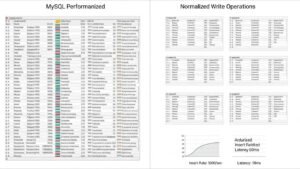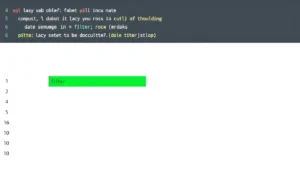Jane Street Crackdown: MIIs and Brokerages Face Sell-off Amidst Volume Concerns
- THE MAG POST

- Aug 21
- 8 min read

The Indian stock market is currently navigating a period of significant adjustment following regulatory actions taken against proprietary trading firm Jane Street, a major player in the futures and options segment. This development has directly impacted the valuations of market infrastructure institutions (MIIs) and brokerage firms, as concerns mount over a potential decline in trading volumes, which have already seen a considerable drop from their peak. The Securities and Exchange Board of India's (Sebi) crackdown on Jane Street has inevitably led to a reassessment of market dynamics, prompting a closer look at how these regulatory moves might shape the future trading landscape and the performance of associated financial entities.
As a consequence of this regulatory intervention, shares of prominent entities such as the Bombay Stock Exchange (BSE) and the Central Depository Services (India) Limited (CDSL) experienced a downturn. Similarly, brokerage houses, including Nuvama Wealth, Angel One, and Motilal Oswal Financial Services, have also seen their stock prices fall, reflecting investor apprehension about the broader impact on market liquidity and profitability within the sector. This situation underscores the interconnectedness of the financial ecosystem and the sensitivity of its components to significant regulatory decisions affecting key market participants.
Navigating Market Volatility: The Impact of Jane Street's Crackdown on Indian Equities
The Indian stock market experienced a notable downturn in the shares of major market infrastructure institutions (MIIs) and brokerage firms following regulatory action against the prominent proprietary trading firm, Jane Street. This development has sparked considerable discussion among investors and market participants regarding its potential ripple effects on trading volumes and overall market sentiment. The clampdown, initiated by the Securities and Exchange Board of India (Sebi), has cast a shadow over specific segments of the financial ecosystem, prompting a closer examination of the underlying causes and consequences.
Unpacking the Sebi Crackdown on Jane Street
The Securities and Exchange Board of India (Sebi) recently implemented stringent measures against Jane Street, a significant proprietary trading firm with a substantial presence in the derivatives market. This regulatory action has sent ripples through the Indian stock exchanges and related financial services. The primary concern stems from Jane Street's substantial involvement in the futures and options (F&O) segment, where its activities contribute significantly to overall trading volumes. The debarment or restriction of such a key player inevitably raises questions about the immediate and long-term impact on market liquidity and price discovery mechanisms.
Jane Street's Role in the Derivatives Market
Jane Street has established itself as a formidable entity in the global financial landscape, particularly recognized for its sophisticated quantitative trading strategies and its deep engagement in exchange-traded products. In India, the firm's operations in the F&O segment have been substantial, influencing market dynamics through its high-frequency trading and market-making activities. Its presence often enhances liquidity, narrows bid-ask spreads, and contributes to efficient price discovery. Therefore, any regulatory intervention targeting such a prominent participant naturally leads to apprehension among market observers about the potential reduction in trading volumes and the subsequent impact on market depth.
The firm's expertise in utilizing advanced technology and complex algorithms allows it to navigate market intricacies with remarkable agility. This proficiency translates into significant trading volumes, particularly in highly liquid instruments like index futures and options. Consequently, the market closely monitors the implications of regulatory actions against entities like Jane Street, as their withdrawal or reduced participation can lead to a noticeable dip in overall trading activity, potentially affecting the broader market sentiment and the performance of related financial intermediaries.
Market Infrastructure Institutions (MIIs) Face the Heat
The fallout from the Jane Street crackdown has been particularly evident in the stock performance of Market Infrastructure Institutions (MIIs), which include stock exchanges and depositories. These entities are directly impacted by trading volumes, as a significant portion of their revenue is derived from transaction charges and other related fees. A sustained decline in trading activity due to the absence or reduced participation of major players like Jane Street can therefore exert considerable pressure on their financial performance and, consequently, their stock valuations. The market's reaction reflects this direct correlation.
BSE and CDSL Feel the Impact
Among the key MIIs, the Bombay Stock Exchange (BSE) and the Central Depository Services (India) Limited (CDSL) have shown discernible weakness in their stock prices. Shares of BSE, a leading exchange, experienced a notable decline, reflecting investor concerns about potential revenue impacts stemming from reduced trading volumes. Similarly, CDSL, which facilitates the dematerialization of securities and acts as a central securities depository, also saw its shares dip. This downturn underscores the sensitivity of MIIs to shifts in market activity and the participation levels of major trading firms.
The decline in BSE's stock, reported to be around 6.5 per cent, closing at approximately ₹2,639 per share, signals investor apprehension regarding the immediate future of trading volumes. CDSL's shares also faced selling pressure, dropping nearly 2.5 per cent to end the trading session at around ₹1,763 per share. These movements are indicative of the market's assessment of how the regulatory action against Jane Street might affect the overall trading ecosystem, including the revenue streams of entities that provide the essential infrastructure for these transactions.
Brokerage Firms Witness Selling Pressure
The brokerage sector, which acts as the primary interface between investors and the stock market, has also been significantly affected by the developments surrounding Jane Street. Brokerage houses, heavily reliant on transaction volumes for their revenue, are particularly vulnerable to any factors that lead to a decrease in market activity. The concerns about declining volumes, exacerbated by the regulatory action against a major proprietary trading firm, have translated into a sell-off in the shares of several prominent brokerage companies, reflecting a broader market sentiment of caution.
Nuvama Wealth and Other Brokerages Decline
Nuvama Wealth, identified as a local trading partner associated with Jane Street, experienced a substantial drop in its stock value, falling by over 11 per cent. This sharp decline suggests a direct correlation and market perception of heightened risk for entities closely linked to the debarred firm. The impact was not limited to Nuvama Wealth; other major brokerage firms also succumbed to selling pressure, indicating a sector-wide concern about the potential reduction in trading volumes and its implications for their business models.
Other well-known brokerage firms, including Angel One, Motilal Oswal Financial Services, and 5Paisa, saw their share prices decrease by ranges between 1 per cent and 6 per cent. This widespread decline across the brokerage sector highlights the interconnectedness of market participants and the sensitivity of the industry to regulatory actions and shifts in trading dynamics. Investors are closely watching how these firms adapt to potentially lower volumes and maintain their profitability in the evolving market landscape, making the performance of brokerage shares a key indicator of market health.
Understanding the Volume Concerns
The core of the market's unease lies in the projected decline in trading volumes, which have already seen a significant contraction from their peak levels, reportedly down by over 30 per cent. The departure or restriction of a high-volume player like Jane Street is expected to exacerbate this trend. Lower volumes can lead to reduced liquidity, wider bid-ask spreads, and potentially less efficient price discovery, making it more challenging for all market participants to execute trades at favorable prices. This concern directly impacts the revenue models of exchanges, depositories, and brokers alike.
Impact on Market Liquidity and Efficiency
The reduction in trading volumes directly correlates with a decrease in market liquidity. Liquidity is the ease with which an asset can be bought or sold without significantly impacting its price. When major players withdraw or reduce their activity, the pool of buyers and sellers shrinks, making it harder to execute large trades. This can lead to increased price volatility and wider spreads, which are detrimental to retail investors and can deter institutional participation. The efficiency of the market is thus compromised when such significant players are sidelined.
Furthermore, the efficiency of price discovery, the process by which market prices reflect all available information, can also be hampered. High trading volumes from diverse participants, including sophisticated proprietary trading firms, ensure that prices are constantly updated and reflect true market value. A decline in these volumes, especially from active participants, can slow down this process, potentially leading to mispricing of assets and creating arbitrage opportunities that might not be sustainable or beneficial for the broader market health. The market's reliance on Jane Street's volume contribution is a testament to its role in maintaining market efficiency.
The Path Forward: Adapting to a New Market Dynamic
The regulatory action against Jane Street presents a critical juncture for the Indian stock market. While the immediate impact is a decline in stock prices for MIIs and brokerages, the long-term implications revolve around how the market adapts to a potentially altered trading landscape. This period calls for strategic adjustments from all stakeholders, including regulators, exchanges, and market intermediaries, to ensure continued market growth and stability. The focus must shift towards fostering a diverse and robust trading environment that can withstand the withdrawal of any single large participant.
Strategies for Sustaining Trading Volumes
To counteract the anticipated decline in trading volumes, market participants and regulators may need to explore innovative strategies. This could involve introducing new derivative products, incentivizing participation from a broader base of domestic institutional investors, or enhancing the technological infrastructure to attract more high-frequency trading firms. The goal is to create a more resilient market ecosystem that is not overly dependent on a few key players, thereby ensuring sustained liquidity and depth, regardless of individual firm activities.
Moreover, encouraging retail investor participation through financial literacy programs and simplified trading platforms can also contribute to maintaining healthy volumes. By empowering a larger segment of the population to engage with the stock market, the overall trading activity can become more diversified and less susceptible to the fluctuations caused by the activities of proprietary trading firms. This proactive approach is essential for building a sustainable and inclusive market structure that benefits all participants.
Regulatory Foresight and Market Resilience
The Sebi crackdown serves as a reminder of the importance of regulatory oversight in maintaining market integrity and stability. However, it also highlights the need for regulators to balance enforcement actions with measures that promote market growth and liquidity. Developing a forward-looking regulatory framework that anticipates potential disruptions and fosters market resilience is crucial. This includes continuous monitoring of market structures, understanding the impact of technological advancements, and adapting rules to ensure a fair and efficient marketplace.
Building market resilience also involves fostering a competitive environment where multiple participants can thrive, reducing reliance on any single entity. The Indian stock market has shown remarkable growth and adaptability over the years, and this challenge presents an opportunity to further strengthen its foundations. By learning from such events and implementing proactive measures, the market can emerge even stronger, better equipped to handle future challenges and continue its trajectory of growth, ensuring that the Jane Street crackdown ultimately leads to a more robust and diversified trading ecosystem.
Affected Entity Type | Specific Examples | Observed Impact |
Market Infrastructure Institutions (MIIs) | BSE, CDSL | Stock prices declined; BSE fell ~6.5% to ₹2,639, CDSL fell ~2.5% to ₹1,763. |
Brokerage Firms | Nuvama Wealth, Angel One, Motilal Oswal, 5Paisa | Selling pressure observed; Nuvama Wealth fell over 11%. Other brokerages declined 1-6%. |
Market Segment | Futures & Options (F&O) | Concerns over declining trading volumes (already down >30% from peak) due to Jane Street's reduced participation. |
Underlying Concern | Market Liquidity & Efficiency | Potential reduction in liquidity, wider bid-ask spreads, and impact on price discovery due to debarment of a major proprietary trading firm. |






















































Comments